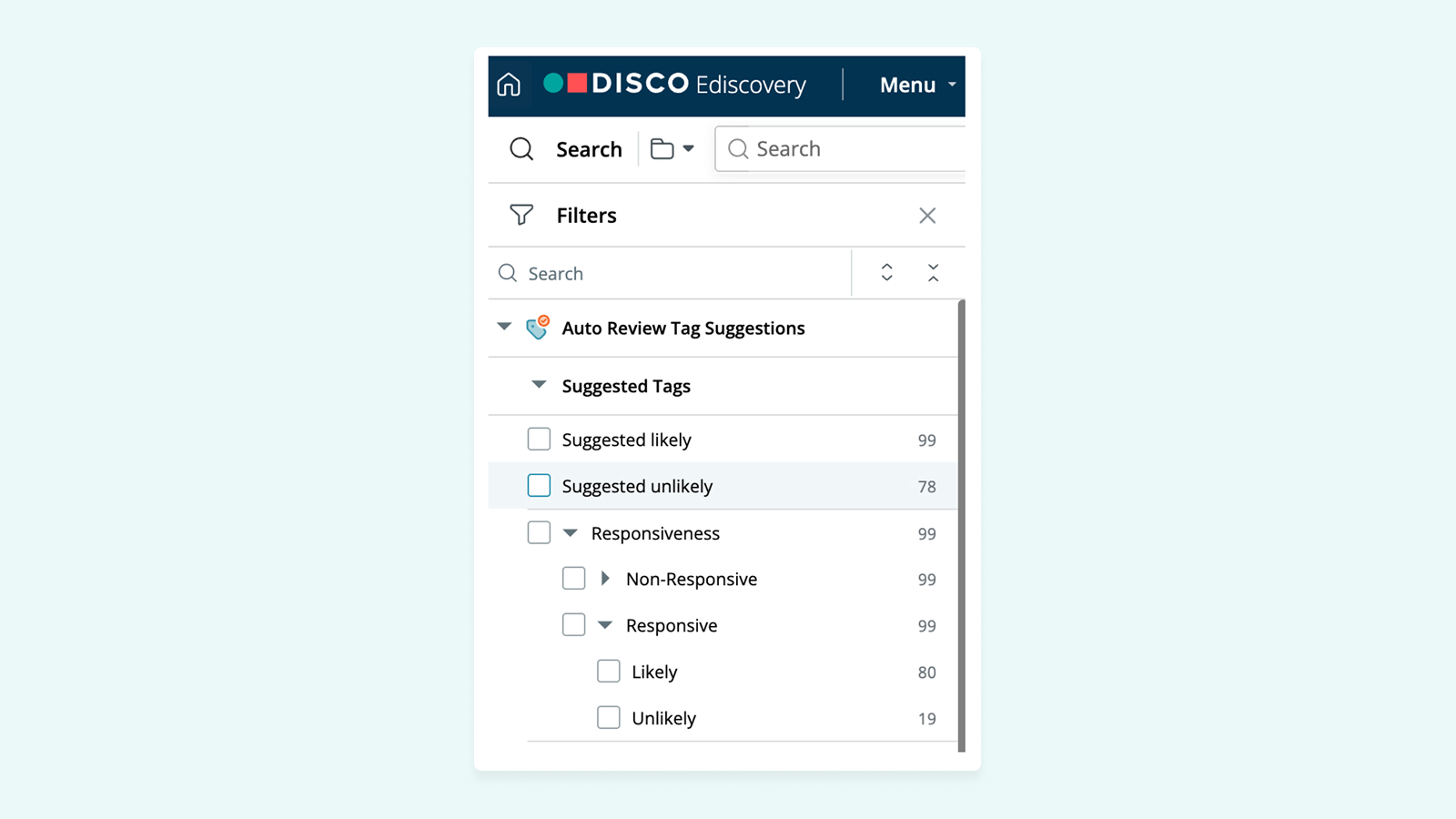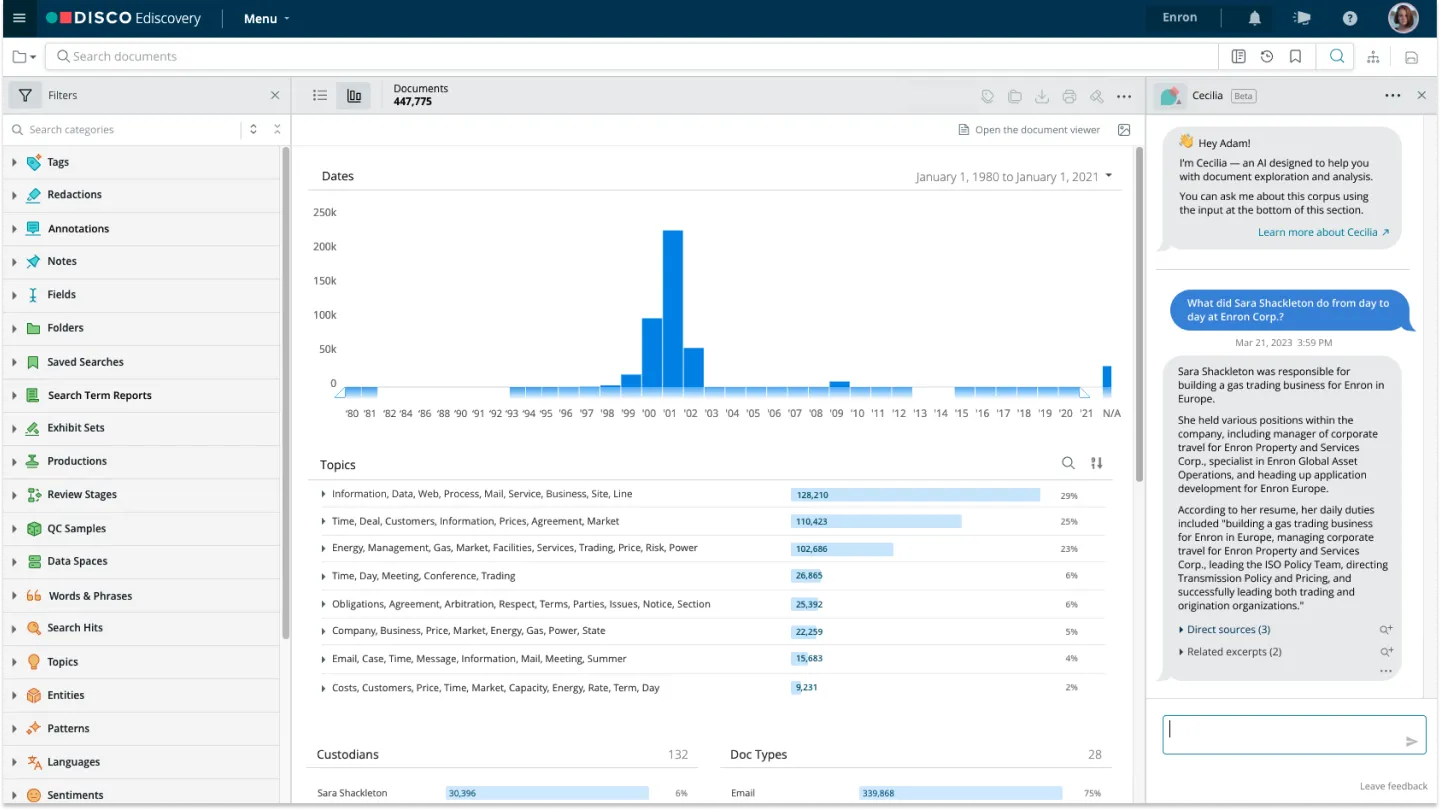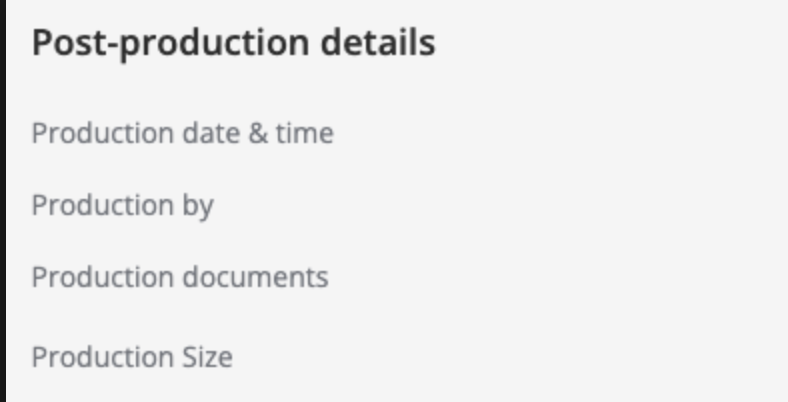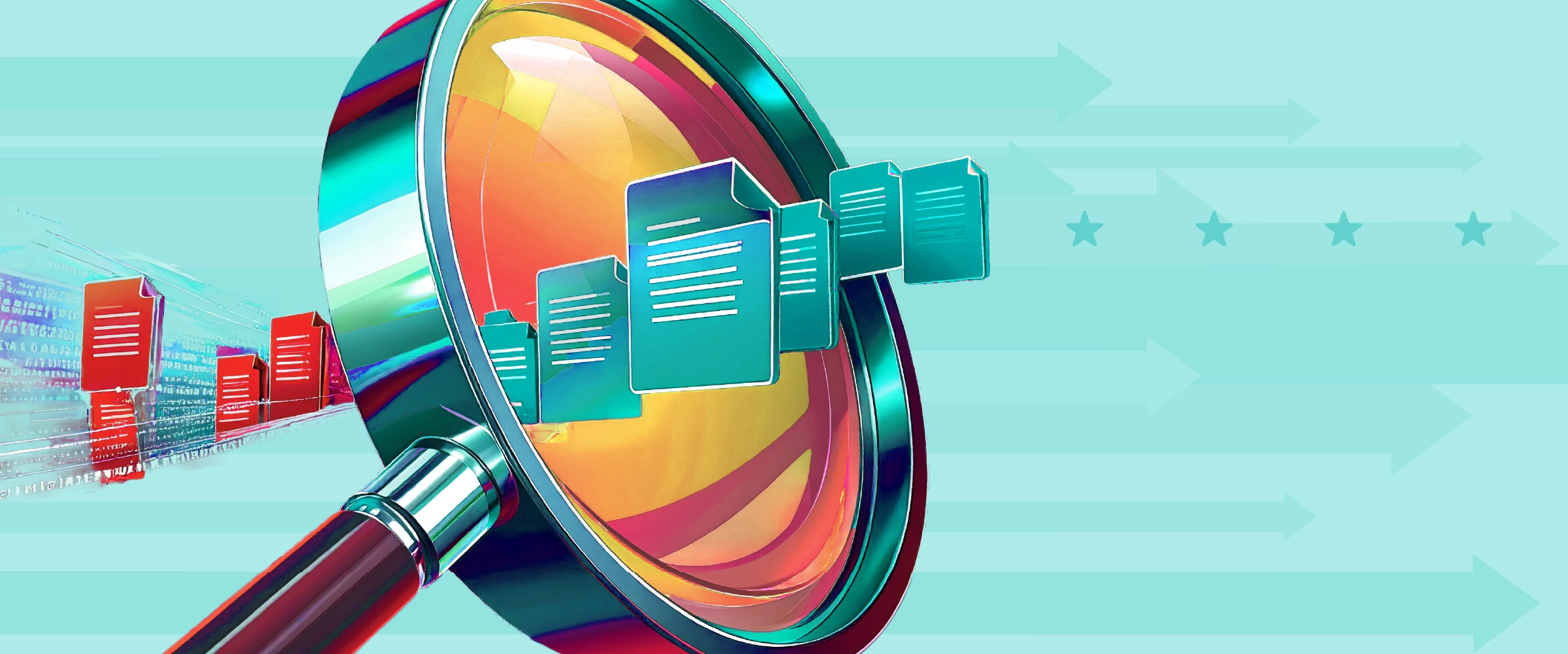⚡️ 1-Minute DISCO Download
Technology has forever changed how people interact with the world, communicate with each other, and conduct business. The practice of law has rapidly evolved as a result. The use of technology to gain insights in rapidly expanding volumes of data is necessary to effectively advocate in today’s data-driven world. With ediscovery in particular, using advanced technology is a non-negotiable and at times costly undertaking.
Increasingly, law firms view ediscovery services and technology as a viable revenue stream and many are bringing ediscovery capabilities in-house. Making the leap from a predominantly outsourced model, or one that is utilizing internal but suboptimal legacy resources, to a more robust and scalable ediscovery ecosystem may seem daunting. Even mature ediscovery programs continually weigh the benefits of building internal infrastructure vs employing infrastructure as a service or a full managed service model as well as how to recover the costs associated with maintaining and staffing an ediscovery program.
Understanding the total cost of ownership for the various deployment models, the available cost recovery models (and weighing that against your firm’s consumption), current recovery posture, and client base assist in determining a firm’s best approach to ediscovery cost recovery. This strategy can decrease write-downs by over 10% and increased insourcing of ediscovery matters by 20%.
Total cost of ownership: cloud solutions compared to on-premise
Building, maintaining and securing on-premise ediscovery systems is a costly undertaking that substantially impacts overall firm profitability and profits per partner (PPP). Understanding the total cost of ownership for on-premise vs. cloud solutions requires looking deeper than just the four corners of your contract with a software provider. Annual software licensing per instance across all tools in the ediscovery stack, initial hardware acquisition, additional hardware for scaling or to replace hardware at end-of-life, ongoing hardware and software security or maintenance, and the non billable personal necessary to conduct this all have an impact on a firm’s bottom line.
Hardware costs
Annually, to maintain the system integrity and security of an on-premise ediscovery ecosystem, a firm must invest up to hundreds of thousands of dollars in the hardware necessary to provide the computational power and storage necessary to operate multiple discovery software solutions as well as redundant systems for business continuity and disaster recovery. This hardware must continually be monitored, patched, and secured to prevent system failure or breach at substantial investment in time and money.
Licensing multiple tools and instances
In addition, processing tools, review platforms, and analytic suites require multi-year commitments and expensive software licenses that are large enough to support your biggest matters. The cost associated with each component of the ediscovery ecosystem often runs hundreds of thousands of dollars in addition to the hardware and personnel costs to support it. Many software solutions also charge fees per user and hourly for support.
Non-billable infrastructure support personnel
Hosting large amounts of data within a firm’s ecosystem exposes a firm to a greater amount of potential risk from a cybersecurity and disaster recovery perspective. The support personnel necessary to ensure that the entire ediscovery ecosystem remains adequately maintained, appropriately patched to mitigate cyber vulnerability and updated with regularity increases as the size and complexity of an ediscovery program grows. These support staff roles, generally IT or system administrators, are generally non-recoverable and directly impact a firm’s profit margin.
Ongoing hardware scaling costs
As data volumes continue to increase and hardware wears down, the ongoing cost to maintain and replace and expand storage and processing power increases with each year. The ongoing cost and security risks associated with managing terabytes of data on-premise is steadily increasing, putting greater strain on firms with internal ediscovery infrastructure. This risk and cost is further compounded by the explosion of data in ediscovery. A decade ago, an average custodian generated 1 GB of data and that volume has increased twenty fold and shows no sign of abating.

More data more costs
An additional cost consideration in on-premise infrastructure is the number of self-contained instances a firm requires. Considerations of data privacy and security often mandate multiple instances which have a similar requirement in terms of hardware, licenses, and support.
Although these costs have not historically been transparent to many consumers of ediscovery services, they impact every partner at the firm because of the sizable impact on profit and ongoing PPP.
By contrast, DISCO offers a transparent model that requires no capital investment for hardware, ongoing maintenance and disaster recovery costs, or ongoing IT support. By transitioning to the cloud, the firm is able to immediately avoid a capital expenditure of several hundred thousand dollars and ongoing cost of maintenance as soon as the migration is made to DISCO.
Assessing your current state
The first step in making the leap to a more robust ediscovery program with cost recovery is to conduct a holistic current state assessment. In order to understand the path forward, you must fully understand the current investment, challenges, and opportunities in the ediscovery space for your firm.
The main areas to assess are:
Current amount invested annually in hardware, software, and maintenance
Hardware and software costs are not one-off considerations in running an ediscovery program. Hardware reaches end-of-lifecycle and needs to be replaced or expanded; software licenses are recurring; system maintenance requires downtime; personnel, and additional expenditure. Understanding your annual spend just to maintain the status quo, and incremental cost increases as data volumes expand, is the first step in better understanding the total cost of the current state. Personnel costs including IT, litigation support, billable resources, system administrators, and any carrying cost assigned by the firm should all be factored in.
Total value of ediscovery spend across all internal services offered
Conduct a five-year retrospective on total revenue derived from ediscovery services. This should include any billable time from litigation support resources as well as any per-unit charges your firm bills for (processing, analytics or hosting are common ones). The five-year retrospective is important because you want to identify any trends in terms of adoption and the growth or contraction of your program. This combined by data volume processed and hosted will provide a unit cost efficiency for your program.
Total ediscovery spend across full ecosystem (internal and outsourced)
This step is more challenging, but it’s a good idea to reach out directly to each service provider you currently engage with and request a five-year breakdown of total spend by client, geography, year and service type. Ensure that your service providers provide a report that includes matters they worked on for your firm but directly billed to your mutual end client, or the numbers will not reflect true total spend. Having this information is important in making the case to the executive committee to increase investment or change the cost recovery model. Understanding the true scale of your firm’s spend is a compelling data point to use in making your pitch to increase cost recovery to the executive committee.
Total volume of data in both internal and third party environments
In conjunction with the spend analysis, request a breakdown of total active data by matter in each of your identified third party service provider’s ediscovery environment. This, in conjunction with your internal data hosted, paints a picture of total active data in your ediscovery universe. Using the total volume per matter it is possible to drill down into total unit cost per matter by provider and it is useful to use this in presenting your internal solution compared to vendors. Generally, you will find that an internal solution offers substantial savings compared to third parties. DISCO deployed as an internal solution amplifies that savings. This is helpful in driving up both willingness to bill for discovery services internally and to encourage more clients to bring ediscovery needs into the law firm.
Total annual write-downs
Understanding the volume of ediscovery services currently being completely or even partially written down is another key area to identify. Understanding the volume of ediscovery services being recouped currently, top write-down offenders, and overall amount of services not charged for is key in understanding the health and scale of your program.
These data points help map the scale of your current ediscovery program in terms of total dollars spent on discovery and total active data volumes, ratio of internal vs. vendors, amount annually invested in supporting your internal program, and amount of those costs recouped. Whether you start with a fully outsourced and minimally cost-recovered model or have one further along in the maturation process, having this baseline is key in understanding your starting sentiment to cost recovery, effectiveness in recovering, and identifying gaps and challenges.
Cost recovery models
Ediscovery services are a major potential revenue stream for law firms, with major programs generating significant profit margins across all phases of the ediscovery lifecycle. Enterprise clients are well-accustomed to paying substantial fees to either outside counsel or third-party ediscovery companies for ediscovery services and, with the right recovery model, appropriate language in engagement letters, and addenda and education of outside counsel attorneys, a transition to a more inclusive cost recovery model is possible.
According to recent cost recovery surveys, less than 13% of law firms currently absorb the ediscovery costs for clients. The vast majority of law firms, over 85% at minimum, recoup the cost of ediscovery hardware and software. There is a smaller subset turning ediscovery into a major profit center. The median volume across 100 law firms surveyed was a recovery of 84%, while the mode was 100%.
How are today’s firms employing the main cost recovery models to recoup investment in ediscovery services and software?
Billable hours
The vast majority of law firms today, at minimum, are charging for billable time for processing, project management, ongoing support and other ediscovery-related services. Bill rates vary depending on the sophistication of the firm and clients and the type of technology used. Generally, this is applied to “human time” and not the amount of time a machine takes to perform a task, resulting in total cost for enterprise clients that is 30-40% less than external vendors.
If the current state of a firm is heavy on write-downs or historically has not billed back for ediscovery services, this approach may be the easiest to adopt. Billing on an hourly model is conceptually similar for most partners and, depending on your firm model, the hours billed can be attributed to the lead attorney on a matter, incentivising an attorney to keep the billed hours in lieu of writing them down.
Billable plus hosting
Many firms will charge billable plus a per GB charge on an ongoing basis for hosting of data. While some clients do push back, this is a useful tool in encouraging clients to decommission inactive data instead of hosting indefinitely. Some Am Law firms recoup as much in hosting fees as billable hours for ediscovery services.
Combining the billable hour and hosting costs allows for a larger recoupment of ediscovery spend, especially if your current rates for litigation support staff are on the lower end of the spectrum.
Like a vendor
Some firms employ a model that mirrors vendors charging on volume of data across different aspects of the ediscovery lifecycle. The common points of charge are number of GB processed, data volume hosted, and, separately, the amount that has analytics applied. Some law firms also charge license fees for accessing a review platform and project management billable hours as incurred. As with the previous two models, the amount billed is roughly 30% below vendors.
This model is the most conceptually similar to what clients see with a third party, but the most dissimilar to what most attorneys are used to deploying on their own bills. The culture of your firm, volume historically charged for ediscovery services, and/or hours written off all factor into an assessment of whether this model is appropriate for a given firm.
Moving to a more advanced cost recovery model coupled with more effective and robust ediscovery tools enabled firms to bring substantially more large and complex matters in house at a lower cost for the client and increased profit margin for the firm. One global financial institution migrated multiple ongoing extremely high-profile matters and all future ediscovery work to a firm purely because of the better ediscovery capabilities and reduced cost compared to the prior vendors. Robust and cost-efficient technology helped secure a revenue increase and to differentiate the firm with existing and new clients.






%20(1).jpeg)







.png)
